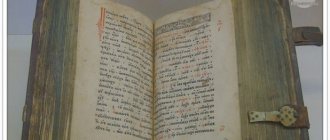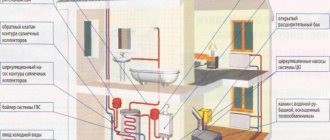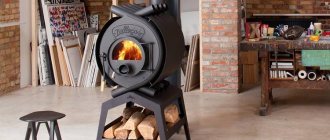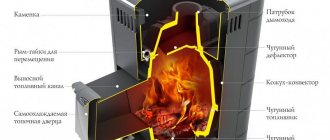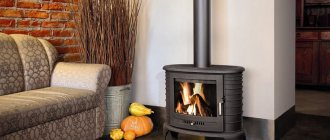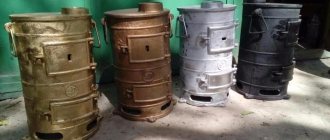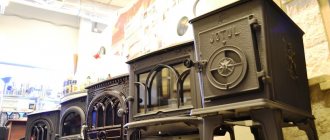Country houses are increasingly equipped with small stoves of various models. A stove in the interior by its very presence makes it warmer and more comfortable. And in spring and autumn it provides a comfortable temperature in the rooms, which is doubly pleasant when it is raining outside or a damp, cold wind is blowing.
The modern market offers a huge selection of compact stoves for country houses, designed to operate on various types of fuel:
- Gas;
- Electrical;
- Models burning coal, pellets or wood.
Wood-burning stoves are in particular demand. Tongues of live fire dancing in the firebox, the breathtaking smell of real wood, and the special soft, enveloping and relaxing warmth make them desirable both in small country houses and in reputable country cottages.
This article will focus specifically on wood-burning stoves.
Types of wood stoves
Having decided on what your heating device will operate on, you should decide what its main parameters will be.
Modern wood stoves are usually divided according to the following indicators:
- Purpose: Heating, their only task is to heat the building;
- Heating and cooking. They heat several rooms at once and have special design elements (hobs) that allow you to cook and heat food;
- Furnaces-boilers. A water circuit is built into them, which allows them to be used in a water heating circuit or for preparing hot water. Varieties of such structures are sauna stoves;
- The oven is universal, equipped with a compartment for drying fruit, a hot water box, an oven, a summer chimney and a samovar connection point.
- Metal, with thin and thick walls;
- classic options, designed for installation near a wall;
- short-term (up to 3 hours) burning of one stack of firewood;
*
Also read about the bell-type stove and how to make it.
Mini ovens with grill and convection
BBK OE3073DC
It’s not for nothing that this model is called a “mini-oven”. Despite the moderate chamber volume (30 l) and relatively low power (1.5 kW), it is in no way inferior to large, reliable kitchen appliances. It is equipped with convenient electronic process control, an information display, convection for fast and even cooking, several automatic programs, a grill and a timer with automatic shut-off. Overall dimensions 51x36x32 cm. One year warranty.
Advantages
- The temperature range of 30 … 230°C allows, for example, baking, frying or even preparing yoghurt.
- Lighting inside the cooking chamber
- Timer with sound signal up to 120 minutes
- Show all settings
- Double glazing in the door heats up less
- Slim Design
- Convection can be turned on or off as needed in most automatic programs
- Electronic display
- Electric mini oven with convection, grill and automatic cooking programs (fermentation, reheating, defrosting, pizza, baking, etc.)
Flaws
- The device gets very hot
Maxwell MW-1851
The mini-oven with a power of 1.6 kW and a working volume of 30 liters has a distinctive feature: a spit for roasting a whole chicken. Otherwise, the set of functions is quite standard: temperature adjustment, a timer with automatic shutdown, a switching mode for the upper/lower heater or turning them on together. Mechanical control. Warranty period - 1 year, service life - 3 years (according to the passport).
Advantages
- Simple mechanical control with three rotary switches: timer, temperature (max. 230°C), operating mode (convection in defrost mode without heating/top/bottom heater/top and bottom heater and convection)
- Bright black body, enamel finish, easy to clean
- Sound signal about the end of work
- Mode indication
- Mini oven with grill, convection and spit functions
Flaws
- No display
- Single glass is very hot, similar to
- Lack of automatic cooking programs
Steba KB 28 ECO
Mini-oven with a baking chamber volume of 28 liters and a power of 1400 W. It heats up quickly and can be adjusted to the desired temperature from 90 to 230 degrees. The device has a large selection of operating modes - the upper and lower heating elements can be turned on together or separately, in combination with convection and a spit. Please note that only small birds weighing up to 1 kg can comfortably fit on the spit. There is a mechanical timer for 90 minutes. Good thermal insulation of the body and double door will prevent burns during cooking.
Advantages
- good body insulation
- cleaning mode selection
- fast heating
Flaws
- small braid
With convection and double glass
There are a wide variety of electric ovens available, and choosing the right model can be difficult. In addition to useful functions, the most important thing is the double glass in the oven door, which does not overheat while the oven is operating.
Steba KB 27 U.3
Universal tabletop appliance with top grill and convection. The cavity capacity is only 20 liters. This model is equipped with a grill, spit and a standard baking tray on which you can cook various dishes. The oven body is metal and the door has double glazing.
Advantages:
- ease of use;
- high quality workmanship
- uninterrupted operation;
- versatility;
Flaws:
- Housing gets dirty very quickly.
- It gets too hot during operation;
Gemlux GL-OR-2265LUX
Spacious appliance with good performance. Nine cooking modes - fermentation, bottom and top heat, custom program, defrost, separate functions for pizza, toast and poultry.
The set includes a baking sheet, a stand, a spit with special clamps and a baking sheet with handles on the sides. The device can be adjusted using four convenient handles.
Advantages:
- unusual design;
- Wide selection of different modes;
- Door with double glazing.
Flaws:
- Big sizes.
Scarlett SC - EO93O21
An ideal model for country houses or small kitchens where there is no room for a traditional oven. This appliance can completely replace it, offering a wide range of functions: top grill, convection, simultaneous heating from below and above, door with durable double glazing.
Advantages:
- lighting;
- convenient timer;
- modern design.
- Many functions;
- compactness;
Flaws:
- The housing becomes very hot during cooking.
Select the one you need
Having decided that a small stove should appear in the country house, the buyer begins to make a choice. And the main argument in favor of this or that model should not be that it is “beautiful” or “red.” The furnace is selected according to other criteria, the main of which are the upcoming operating conditions:
- average values of external temperatures;
- intensity and duration of use;
- volume of heated room;
- combustion frequency;
- firewood consumption;
- functionality;
- power;
- warm-up speed;
- availability of possible adjustments.
You need to have answers to all these questions before you start making your choice.
Some other parameters are also important:
- installation conditions (a thin-walled metal stove can be placed on a steel sheet, while a brick stove may require a foundation);
- ease of work (possibility of self-installation);
- dimensions.
It is quite natural that when purchasing, attention is paid to the aesthetics of the model and the ability to organically fit it into existing interiors.
For many summer residents, one of the most important criteria influencing the purchasing decision is the price of the stove and the cost of its installation.
Article on the topic - types and types of stoves. Types and names.
Which stove to choose for your summer house?
It is impossible to give a definite answer to this question. Much depends on how much money you can allocate for the purchase of a heating device for your dacha.
The best option is to purchase a cast iron fireplace stove for 18-20 thousand. Compared to simple potbelly stoves, they are much preferable. In winter you can sit by the fireplace and admire the fire in comfortable conditions.
But a steel combination stove will cost an order of magnitude less, and if you buy a model with a glass door and line the walls with fireclay bricks, the advantages of a cast iron fireplace become invisible.
If among steel mini-stoves it is preferable to buy products from Russian companies, then when buying cast iron fireplace stoves it is better to pay attention to foreign models.
Among other criteria, we highlight several main characteristics that are important to consider when purchasing or manufacturing stoves:
- When choosing equipment, be sure to pay attention to power. It must correspond to the volume of the room. It is not recommended to buy options with higher or lower heat output;
- check all documents and quality certificates on the stove. Inspect and feel all parts of the structure. If the paint is applied unevenly or the metal is not processed after cutting, then they are trying to sell you a fake.
Steel furnaces
All these models can be divided into two main groups.
The first one assembled thin-walled furnaces
In fact, the small stoves for summer cottages included in this group are variations on the theme of the classic “potbelly stove”. Allows you to quickly warm up the room. However, thin walls do not retain heat well and cool quickly. The weak point of such models is the welding seams. If the oven is heated intensely, they may crack.
These products consist of:
- a firebox in which fuel burns;
- grates on which coals are rolled;
- a blower that provides regulation of the air supply to the combustion zone;
- ash pit, place for collecting ash;
- door for storing firewood;
- chimney that removes carbon monoxide and other combustion products.
Such stoves require frequent refilling, since the wood burns very quickly and heats up in the shortest possible time. This is the best option for a small country house up to 30 m². Warming up is carried out in the shortest possible time.
A typical representative of this group can be considered
Thick-walled stoves designed for long-term burning
*
As a rule, such models are multi-fuel (fuel briquettes, coal, firewood). An increase in the burning time of one load of fuel is ensured by a reduction in the volume of air supplied to the combustion site due to a partially blocked gate and complete blocking of the blower.
Air enters under the dome of the firebox in small quantities, sufficient for moderate combustion, which does not allow the firewood to go out.
Such models are designed for heating buildings up to 100 m². Provided that the dacha is well insulated.
A typical representative of this group can be considered
Read - review of pellet stoves.
Types of stoves based on material of manufacture
Studying the photo of a stove for a summer residence, you can see a variety of models, as well as differences in designs depending on the manufacturing technology.
Each type of material has its own advantages and disadvantages. The choice is made based on technical parameters and operating conditions.
Cast iron stoves
These models are presented on the market in much smaller quantities. Used as a backup heat source that can be used in emergency situations. Unlike thin-walled steel stoves, cast iron stoves, having quickly warmed up, retain heat for a long time.
Products in this group are divided into two basic groups.
Articles on the topic - we make a simple brick oven with our own hands.
Long burning (multi-fuel).
Some models are available with a built-in additional air supply system, which allows you to burn pyrolysis gases.
Furnaces with built-in heat exchangers and water circuit.
Such models allow you to equip your dacha with water heating. Their power is enough to heat large one- and two-story country houses. Provided that the CO is filled with non-freezing coolant.
A typical representative of this group can be considered
Best Countertop Mini Convection Ovens
Convection allows you to cook juicy and soft dishes with a crispy crust, so this option is very much appreciated by modern housewives. In a mini-oven with this function, you can easily prepare bread, meat and fish dishes and desserts. In this category, we present four tabletop electric mini convection ovens that have received the most positive reviews.
Oberhof Mofen L24
A stylish, functional mini-oven that can replace three kitchen appliances at once - oven, grill and dehydrator. It is suitable for drying vegetables, fruits, herbs, and preparing various dishes, including bread.
Let's go through the functionality of the device. Cooking is carried out in convection mode. The temperature range is from 60 to 250°C. You can choose one of 10 automatic cooking programs, 4 modes - “Oven”, “Dehydrator”, “Turbo”, “Aerogrill”. Uniform heating is ensured by 2 heating elements.
The case is made of stainless steel. It does not heat up during operation. The capacity is impressive - 24 liters. The maximum power is 1800 W. Control is carried out using an LCD display. Mixer timer for 99 minutes.
Compact model, 45x38x29 cm, weight 8.6 kg. For your convenience, the manufacturer includes everything you need - a frying basket, several baking sheets, a frying pan, and a removable crumb tray. The interior compartment is illuminated.
Advantages
- Good capacity;
- Many programs and operating modes;
- Accessories.
- Convenient control system;
- Durable design;
- Multifunctionality;
Flaws
- Weight.
- Length of cable;
All components are made of stainless steel and are dishwasher safe. With this device you can cook food without adding oil. Heating occurs quickly. Russified control system.
Kitfort KT-1703
This stove is suitable for a country house, small kitchen or bedroom. Kitfort is equipped with two powerful burners, so the appliance can be used as an electric stove, preparing many dishes at the same time. The oven is equipped with a light so you can monitor the cooking process, and action indicators let you know when your dish is ready. There are also four modes: grill, bake, convection and defrost. The internal compartment has a volume of 30 liters, the device heats up to 230 degrees and is equipped with a thermostat to maintain a constant temperature.
Brick ovens
A small brick stove for a summer house is the most durable, reliable and high-status option. But such stoves are quite expensive. The rooms warm up more slowly than when using steel or cast iron models. But this is many times compensated by the quality of heat and the duration of its preservation.
The vast majority of brick ovens are structurally adapted for cooking. Some models can be used as fireplaces.
Most often, one of the stove models is used as a country stove:
- Dutch
- Swede
- Kuznetsov furnaces.
This is explained by the fact that in the lines of small brick stoves for giving these models, you can choose quite compact options; stoves of a similar design are available for independent laying (if you strictly follow the procedures), and have an acceptable cost (even when ordering the work from a professional stove maker).
*
Products of the mentioned types allow you to choose the optimal model that:
- will provide the optimal temperature in the country house with minimal wood consumption;
- will warm up evenly over the entire height;
- maintain a comfortable temperature in the premises of the cottage for a long time;
- have a maximum heating of the outer walls of no more than 95°C;
- the oven must be completely safe and easy to use;
- its calculated durability (when using appropriate materials and properly executed masonry) must be at least 20 years;
- The presence of through cracks in the outer walls is unacceptable. This is dangerous to human health (carbon monoxide enters the room);
- visually attractive appearance.
What you need for work
If you decide to install a brick stove in your dacha yourself, you should start by choosing its type. Then the required order is selected (on the Internet or technical literature). It is possible to order the development of a personal design from an experienced stove maker. But this is quite an expensive pleasure.
Basic materials
Having the order in hand, you can go shopping for materials (and the missing tools). As a rule, the list of required materials and installation accessories is approximately the same for any brick stoves. The only difference is the amount of materials required.
To work you will definitely need:
- brick, but not any brick, but the one indicated in the order.
This material is divided into:
- by size: 250*120*65 - regular;
- 250*120*80 - thickened;
- 288*138*138 - modular;
- Only grade 1 and grade 2 bricks are suitable for masonry. The body of the furnace and the chimney are made from it;
- Red clay (ordinary). The material is used to make masonry mortar. It is divided into: Oily (sand impurities do not exceed 3%);
- Average (≤ 15%);
- Skinny (about 30%);
Additional materials
- Steel profiles (if they are provided for in the order);
- Steel sheet (for flooring in front of the firebox);
- Annealed steel wire;
- Asbestos cord;
- Waterproofing (roofing felt);
- Construction felt (for laying under the pre-furnace sheet);
- Fireproof mastics (Russian “Garant” or “Monolit”), paint (for example, German Dufa Heizkorperlack).
If your financial capabilities are not limited, you can reduce the time of work (while simultaneously increasing its quality). Purchase factory-prepared dry masonry mixtures. For example, from the Scanterm line, Finnish production (or analogues).
*
In addition to basic and additional building materials, you will need basic stove appliances (according to the order):
- Fire door (it is better to take a glazed one, which will allow you to admire the fiery dance);
- Blower door;
- Views;
- Valves;
- Rotary dampers;
- Grate;
- Wind vane.
Tool
For ease of use, you will need the following tools:
- Stovemaker's hammer;
- Pick;
- Construction trowel (another name, trowel);
- Jointing for masonry joints (preferably);
- Knife-scrape;
- Scoop shovel for mixing the solution (can be replaced with an electric drill with a mixer);
- Measuring tool: Tape;
- folding meter;
- plumb line;
- square;
- levels: construction, water (if any, laser);
In addition, you will need a large container for preparing masonry mortar and a bucket for water.
Carrying out masonry
If earlier the laying of a stove was carried out exclusively according to existing procedures, today the Internet provides the opportunity to lay out a simple stove, guided by step-by-step photos with comments. This option is much clearer to many summer residents. Since correct reading of orders requires primary knowledge of furnace business and symbols.
We offer you a combined version (orders + photos), which tells about the laying of a simple country stove. This model allows you to heat the room and cook food.
Foundation arrangement
It is from this stage that work begins if the stove has significant weight. The option we are considering does not exceed 500 kg for this indicator. Therefore, it can be laid without first making a foundation.
If the floors in the country house are weak, we strongly recommend screeding at the site where the stove will be installed.
A simple baby brick oven for the home
Beginner stove makers are advised to pay attention to just such a simple brick stove. The finished structure is small in size - the total occupied area is no more than 0.5 m2
Set for laying a mini brick oven
Start by preparing the devices necessary for the construction of the unit in question. You will need the following:
- red stove brick;
- fireproof brick;
- fireclay and building clay;
- sifted fine sand;
- roofing iron;
- roofing felt;
- doors for combustion, cleaning and ash chambers;
- grate;
- stove for one burner;
- valve;
- steel pipe;
- plumb line;
- yardstick;
- protective gloves;
- trowel;
- level.

